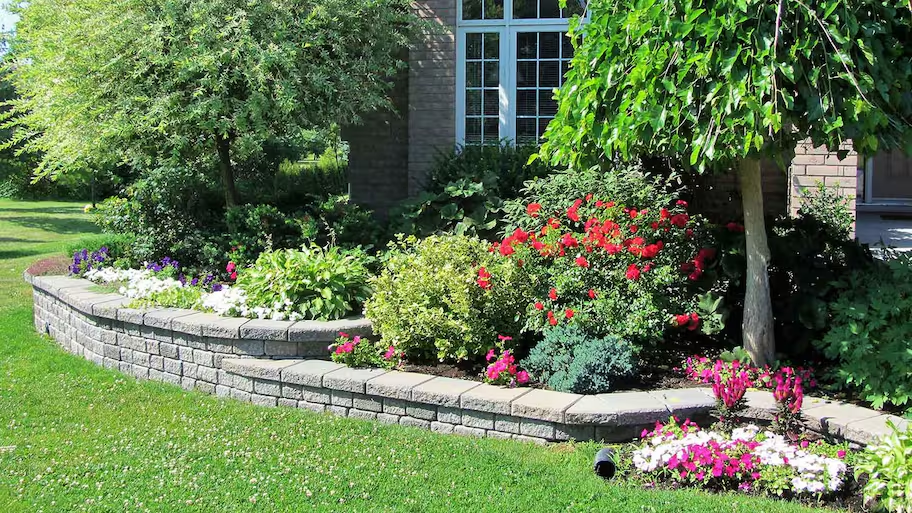Timeless Elegance in Landscape Design: Creating Natural Stone Wall Gardens

Natural stone wall gardens epitomize timeless elegance in landscape design, blending the rustic charm of natural materials with the structural integrity of Natural stone wall garden (Natursteinmauer Garten). These stunning garden features not only enhance the aesthetic appeal of outdoor spaces but also provide functional benefits that contribute to a harmonious and sustainable landscape environment. Whether used to define boundaries, create terraced levels, or accentuate garden focal points, natural stone walls offer versatility, durability, and enduring beauty that withstands the test of time.
1. Architectural Integrity and Design Versatility
Natural stone walls serve as architectural elements that add character and visual interest to any landscape design. Their inherent texture, color variations, and irregular shapes create a unique and organic aesthetic that complements both traditional and contemporary outdoor settings. Stone walls can be skillfully crafted into various heights, curves, and patterns, allowing landscape designers to create custom designs that integrate seamlessly with the surrounding environment.
2. Structural Stability and Longevity
Constructed from durable natural materials such as limestone, sandstone, or granite, stone walls provide unparalleled structural stability and longevity. Properly built stone walls can withstand weather elements, erosion, and soil pressure, making them ideal for retaining soil on slopes, creating raised beds, or delineating garden zones. The timeless appeal of natural stone ensures that these garden features retain their beauty and functionality for decades with minimal maintenance.
3. Sustainable Garden Practices
Natural stone wall gardens promote sustainable garden practices by utilizing locally sourced materials and minimizing environmental impact. The use of natural stones reduces the carbon footprint associated with transportation and manufacturing compared to synthetic building materials. Additionally, stone walls contribute to water conservation efforts by preventing soil erosion and promoting water infiltration into the ground, supporting healthy plant growth and soil stability.
4. Thermal Regulation and Microclimate Enhancement
The thermal mass of natural stone helps regulate temperatures in garden areas by absorbing heat during the day and releasing it slowly at night. This natural thermal regulation creates a more stable microclimate within the garden, protecting plants from temperature fluctuations and enhancing overall growing conditions. Stone walls also provide shelter for beneficial insects and microorganisms, contributing to ecosystem diversity and garden resilience.
5. Integration with Sustainable Landscaping Features
Natural stone walls can be integrated with other sustainable landscaping features such as rain gardens, native plantings, and green roofs to enhance biodiversity and ecological resilience. These integrated design elements support pollinator habitats, improve water quality, and reduce urban heat island effects, creating healthier and more resilient urban environments. Stone walls can also incorporate built-in seating, water features, or lighting to enhance usability and aesthetic appeal.
6. Designing with Natural Stone Walls
When designing with natural stone walls, consider the following principles for achieving timeless elegance and functionality:
- Site Assessment: Evaluate site conditions, soil types, and drainage patterns to determine the appropriate placement and design of stone walls.
- Material Selection: Choose natural stones that complement the surrounding landscape and architectural style, considering factors such as color, texture, and size.
- Construction Techniques: Employ skilled craftsmanship and proper construction techniques to ensure structural integrity and aesthetic coherence.
- Plant Integration: Select plants that thrive in the microclimatic conditions created by stone walls, such as drought-tolerant species for sunny exposures or shade-loving plants for north-facing walls.
7. Maintenance and Care
Maintaining natural stone wall gardens involves periodic inspections for structural integrity, cleaning debris from mortar joints, and monitoring for signs of vegetation growth or erosion. Repair any damaged stones or mortar promptly to preserve the integrity and appearance of the wall over time. Routine maintenance tasks ensure that stone walls continue to enhance landscape aesthetics and functionality for years to come.
In conclusion, natural stone wall gardens embody timeless elegance in landscape design, offering structural stability, aesthetic versatility, and sustainable benefits that contribute to a resilient and visually captivating outdoor environment. Whether used for retaining soil, defining garden spaces, or enhancing biodiversity, natural stone walls elevate the appeal and functionality of outdoor spaces while promoting environmentally responsible landscaping practices. Incorporating natural stone wall gardens into landscape designs ensures enduring beauty and enduring value that enriches the outdoor experience for homeowners, businesses, and communities alike.






